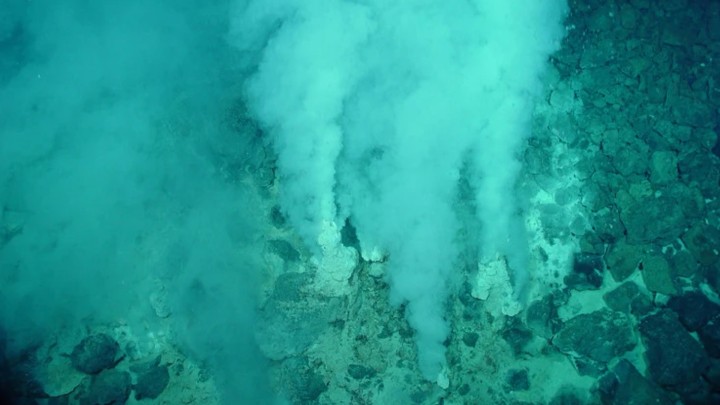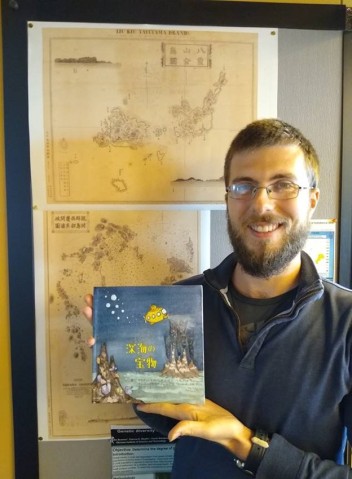Inspiring the next generation of marine conservationists

The prefecture of Okinawa is famous for its golden beaches, clear blue water, and healthy coral reefs. Divers, snorkelers, and sunbathers from throughout Japan flock to these islands at every possible occasion to enjoy the subtropical climate and relaxed, island-life atmosphere. But, look a little closer, and you might come across a sadder side to this paradise. At the heart of the Kuroshio current, Okinawa often ends up with large amounts of rubbish washing up on its beaches. And plans are afoot to start mining the deep-sea area not far from the islands.
Researchers from the Marine Biophysics Unit at the Okinawa Institute of Science and Technology (OIST) have been looking at the impacts of coastal pollution and deep-sea mining. In early August, they visited Iheya Island to share their research with the local school children and community.
One of these researchers is Otis Brunner, a student from the UK who is in his final year of a PhD at OIST. He has lived in Okinawa for five years. Otis’s passion for conserving the ocean around Okinawa is evident to anyone he speaks with, but he’s particularly interested in the conservation of deep-sea hydrothermal vents.
“There are many hydrothermal vents around Okinawa,” Otis said when I caught up with him after his return from Iheya Island. “And they all host an incredible diversity of life.”

Hydrothermal vents are like chimneys that are found in the deep-sea. Thanks to their access to the Earth’s crust, they are hot, mineral rich places, which is in sharp contrast to the cold seawater that surrounds them. Otis went on to explain that some of the vents are white with hairy crabs, while others are black with mussels. There are scale worms and other invertebrates, and sometimes fish and octopus. These are species that live without sunlight, as deep as 2000m below sea level, so they rely on symbiotic bacteria that convert chemicals into food. Many species are only found on particular vent sites.
Otis’s interest in the deep sea has driven a number outreach initiatives since he’s became a PhD student. Most recently, he received funding to print 50 copies of “Treasures of the Deep”, a children’s book about the importance of the deep sea and why we should look after it, which he plans to distribute throughout Okinawa.
The Iheya trip was part of this. Otis wanted to gift copies of the book to the primary schools and community center, but he, and fellow researchers from the Unit—postdoctoral researcher Angela Ares, second year student Kota Ishikawa, and visiting student Noam vogt-Vincent, decided to include a presentation, information session, and a beach cleanup to inspire the next generation of marine conservationists.
On the first day, Friday 5th August, the researchers spoke to a local elementary school about oceanography and pollution. First, Angela discussed the connection between the land and sea, and how rubbish left on land can easily end up in the ocean. Kota then then talked about the impacts of coastal pollution and how this rubbish can enter the food chain of marine animals. He linked this to his own research, which looks at the behavior of garden eels.














